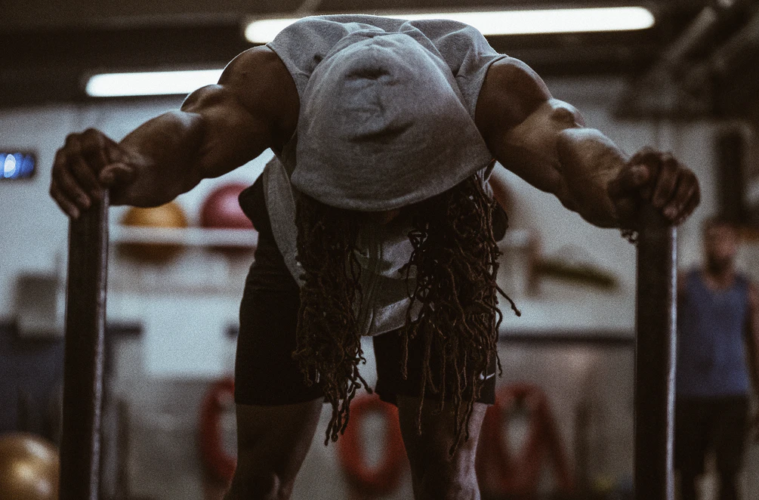To become more ripped, stronger, fitter, and faster, you need to push your body harder. But you also need to pause and rest because strenuous workouts stress your muscles. Physical exercises are tiring, fatiguing, and leave your body sore.
If you hit the gym regularly, you’re familiar with the good and bad muscle pains. You can distinguish them. When your abs hurt because you did one extra exercise, or when your glutes burn because you added excess weight, you know it’s your body’s way to tell to switch to the repair mode because it needs a break. But when the soreness hits the excruciating level and spreads to your ankles, wrists, joints, and knees, you know it points to inflammation. Inflammation can produce debilitating pain and hinder your gym progress. The only way to recover faster is to manage the post-workout inflammation and activate recovery processes.
What is post-workout inflammation?
During rough workouts, you are tiring your muscles and cause little damage at the microcellular level. After a workout, your enzyme, hormone, and inflammation levels grow and can trigger sensitivity and pains. Your body doesn’t know the damage you produce to your muscle cells through exercises is good, and it responds to it similarly to any other tissue deterioration. It activates an immune response and tries to heal itself. After every strenuous physical activity, it initiates the healing process and repairs the damaged cells. It’s natural for your body to try to recover when it detects something wrong or foreign and focuses all efforts on the injured zone. It releases white blood cells and cytokines to support the healing process.
When you work out, inflammation is good because it encourages your body to heal itself. But when you experience inflammation for extended periods, you put an extra strain on your body and can cause more severe conditions.
How does post-workout inflammation affect your body?
During workouts, you cause microscopic tears in your muscle fibers. When an inflammation appears, the body initiates the repair process to fix the damage caused to the cells. Post-workout inflammation comes with symptoms like soreness, pain, and stiffness that work as a defense mechanism to limit physical activity and allow the body to repair. If you train during the recovery period, you can cause extensive injury and overuse your muscles and tissues. In the long run, you can experience a mass breakdown, and secondary muscle damage called delayed onset muscle soreness.
If you’re an athlete, you deal with daily post-workout inflammation as a result of your continuous training. Insisting on training at maximum capacity when your muscles ache can trigger tissue trauma, so it’s best to find a way to relieve inflammation and aid your body to help faster.
What to do when you take workouts too far?
Supposing that your body sends signals that you tore the tissue during your workouts, and you feel ache and stiffness, here are some recovery tactics that can reduce inflammation. You need to control it to lower pain and allow your body to recover and become stronger. Your daily stress and habits can exacerbate inflammation, so exercise deep breathing techniques and meditate when your body is sore. No one of the following techniques will be effective if you don’t provide your body with the needed nutrition and sleep.
Ice, ice baby
The most popular remedy is also the simplest to access. Athletes take cold baths for a reason; they work as a compressive treatment on damaged tissue. There’s hydrostatic pressure in the water, which has the same effect on your muscles as compression. Also, cold water has the temperature effect that influences blood flow, so the ice has a double benefit for post-workout inflammation.
You can achieve the benefits of ice even if you don’t fill the bathtub with icicles. Take baths in water colder than the skin temperature (34 degrees Celsius) to cool down the tissue. Even dipping into the pool or jumping in the ocean can reduce soreness.
Cryotherapy has also been a popular remedy lately. There is a little bit of science behind it that says that when you expose your body to freezing cold air for several minutes, it can lower inflammation.
CBD products
Many sports enthusiasts say CBD oils help them with exercise recovery. They opt for injestables and topical formulas because each product offers different benefits. Injestables are the most popular choice because are easy to take. Full Spectrum CBD Oil delivers improvements in workout performance when used for exercise-induced inflammation. CBD products can speed the recovery process. Oils are so useful, even trainers and chiropractors recommend them. But, similarly to ice baths, don’t expect CBD to be a miracle treatment for soreness because it helps speed the recovery process but doesn’t wholly treat it.
Cut the burgers
Cut not only burgers from your diet, but all processed meats saturated with colorings, preservatives, and hormones. All these elements worsen inflammation. Not to mention they are rich in sodium and make you bloat and retain water. Being bloated isn’t a good look on anyone proud to hit the gym regularly.
A study published in the Journal of American College of Nutrition states that the consumption of red meat is connected to the gain of body fat and can cause inflammation and obesity. So next time you get in line at McDonald’s, think again.
Pineapple is your new best friend
Pineapples aren’t only delicious; they’re also rich in Bromelain. And you may wonder what Bromelain is. It’s a protein-digestive enzyme that relieves post-workout inflammation, lowers swelling, and improves joint pain. Adding pineapple to your diet can reduce post-workout soreness and decrease the amount of refined sugar you eat. It’s a delicious snack, and you can include it even in smoothies, together with Greek yogurt.
Post-exercise pain is never fun. Your body, hurting to the point you cannot leave the bed, affecting your exercise routine, and causing discomfort, is frustrating. Live a well-balanced life and try the above tricks to recover faster.
Advertising disclosure: We may receive compensation for some of the links in our stories. Thank you for supporting LA Weekly and our advertisers.


